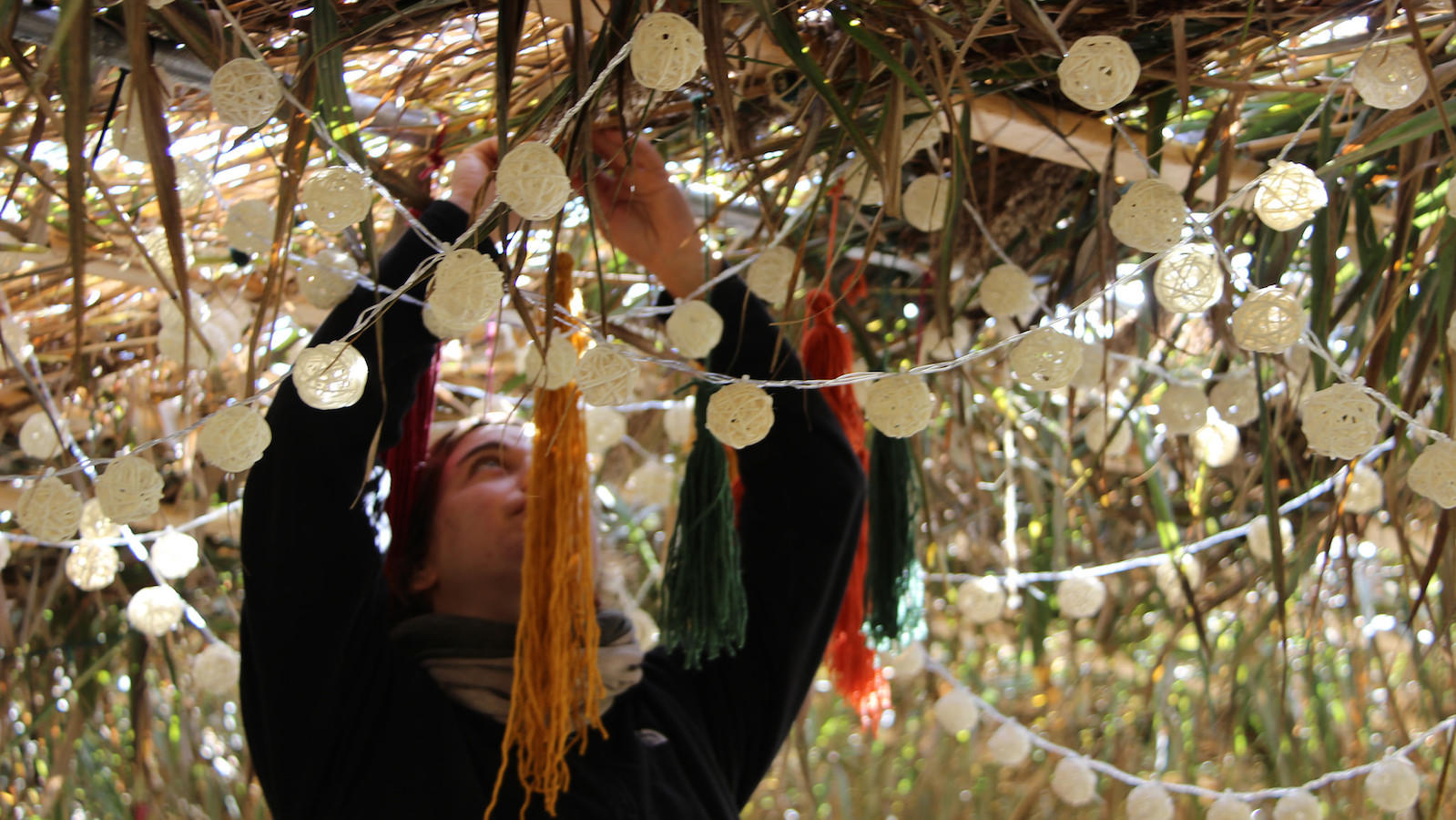If you can get into this you will probably find great joy in it. Start building as soon after as possible. One of the good things about a is that you should build your own. Even if you buy the prefab variety, you should erect it yourself. Most of us live in houses or apartments built by others. Most of us eat bread baked by professionals. Like challah-baking, sukkah-building gives us the chance to enjoy the fruits of our own labor. The sukkah should not be an elegant structure. A rough shack built by hand is the ideal.
The easiest way to build a sukkah is with cement blocks, 2 x 4 standards, and improvised walls. Remember that the number of walls required is related to the forms of the Hebrew letters of the word sukkah.[Samech-–four walls, kaf–three walls, hey–two and a half walls]. All of these [numbers of walls] are permissible. If you can use the back wall of a house or garage as one of the walls, do so. Stack 3 cement blocks in each corner and insert 7-foot 2 x 4’s into the air holes of the blocks. Connect the 2 x 4’s with 1x 2’s across the middle and the top. Stretch cloth (or nail l/4-inch plywood, if you can afford it) over the frame and one wall is complete. One wall can serve as the entrance if covered with cloth on a wire track. Place some 1 x l’s running in both directions on the roof and cover that with rushes or pine boughs.
The entire roof must be made of organic material. Remember to let the stars shine through! A sample sukkah might be a 7-foot cube, for which the following materials would be necessary:
12 cement blocks

Help us keep Jewish knowledge accessible to millions of people around the world.
Your donation to My Jewish Learning fuels endless journeys of Jewish discovery. With your help, My Jewish Learning can continue to provide nonstop opportunities for learning, connection and growth.
4 pieces of 2″ x 2″ x 7-1/2′
7 pieces of 1″ x 2″ x 7-1/2′
8 pieces of 1″ x 1″ x 8′ (crosspieces)
enough cloth or plywood to cover 3 walls
cloth drape for entrance wall
nails
binding twine
greens for roofing
You might want the challenge of not using nails, and binding with rope all joints. It can be done and a fine binding is a beautiful thing to see.
Decorations
Here you can do as you please. Everything’s possible, from traditional fruit hanging to ushpizin posters to printed murals to strung macaroni, gourds, origami, paper chains, etc. Some way should be found not waste too much fruit in these days of hungry nations.
People with families should perhaps divide the sukkah into areas, with one person decorating each area. Put in a carpet–that adds a lot of class. An electric light can be installed. Use a garage-style rubber-insulated socket.
Reprinted with permission from The Jewish Catalog: A Do-It-Yourself Kit, edited by Richard Siegel, Michael Strassfeld and Susan Strassfeld, published by the Jewish Publication Society. If you lack the time or know-how to work with a hammer and nails, try this quick and easy do-it-yourself Sukkah that uses piping from your local home improvement store.
Sukkot
Pronounced: sue-KOTE, or SOOH-kuss (oo as in book), Origin: Hebrew, a harvest festival in which Jews eat inside temporary huts, falls in the Jewish month of Tishrei, which usually coincides with September or October.



